
The Aromatic Gardenia Shrubs: Your Ultimate Guide to Growing Gardenias
Published: 25/04/2024 | Updated: 22/05/2025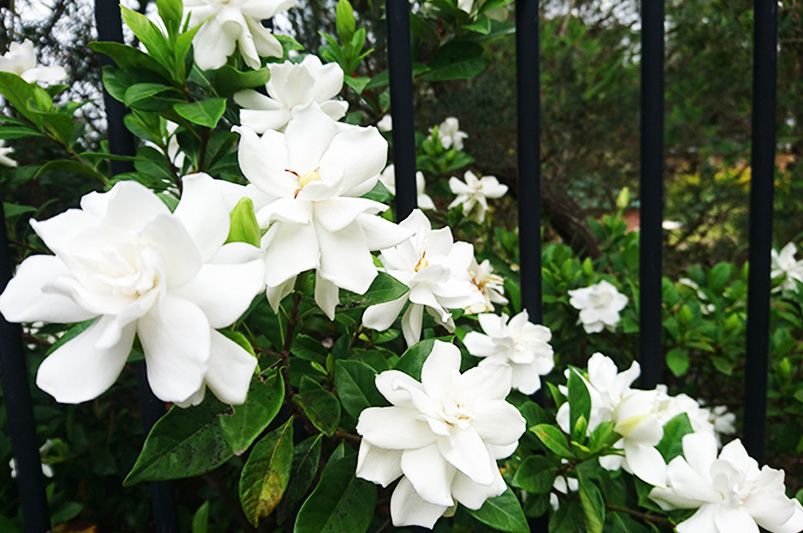
Key Highlights
-
Gardenias showcase exquisite fragrant white flowers that bloom in various temperatures and soil conditions.


-
Selecting the right gardenia varieties, such as Frostproof and August Beauty, ensures adaptability to your region’s climate.
-
Successful gardenia care includes well-draining acidic soil, balanced sunlight exposure, and maintaining high humidity levels.
-
Planting techniques like using peat moss, rich organic matter, and correct mulching support gardenia growth and health.
-
Addressing common issues like bud drop or yellow leaves prevents gardenias from losing their aesthetic and thriving potential.
In the sections ahead, explore tips for ideal climates, maintenance techniques, and solutions to frequent gardenia problems.
Introduction
Gardenias, also called gardenia jasminoides, are loved by many gardeners. People like them for their bright, fragrant white flowers and shiny leaves. Gardenia plants do well outside in a garden or inside a home. To grow them well, you need to pick a planting site with soil that drains water easily. Getting the right mix of light, water, and a good climate helps gardenias look and smell their best. This guide will give you the key steps to plant and care for gardenia plants. Enjoy their white flowers and learn how to care for them all year.
Different Varieties of Gardenias
Gardenias are available in many types. There is a kind that can grow well in almost any climate or soil. You will find small shrubs like Buttons Gardenia and tough ones like Kleim's Hardy. So, there is a plant for all gardeners. Each type has beautiful white blooms and makes the air smell sweet with its fragrant flowers. You can use gardenias in the landscape or put them in pots.
This part will talk about some different types of gardenias. It will point out the best ways to grow them, when you can expect to see their white blooms, and what makes each one special. This will help you choose the right plant for your yard or to add to your indoor group of plants.
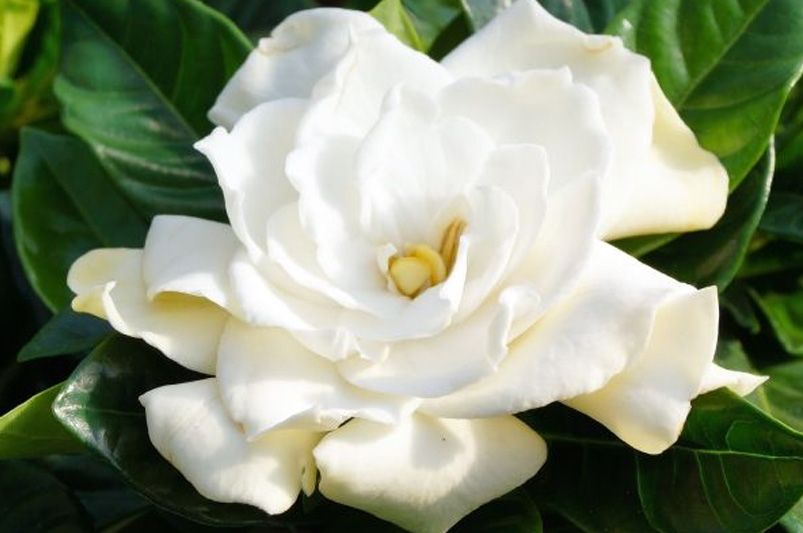
Everblooming Gardenia
Everblooming Gardenias keep making new white flowers, which makes them a favorite for gardens. These white blooms do best in full sun. In early spring, when there is new growth, they should be planted to help them start well. The plants stay at a size that most people can handle, growing up to 4 feet tall and 3 feet wide, so they are good for pots too.
To keep getting those fragrant white flowers, you need to fertilize them on a regular basis and keep the soil moist. These gardenias are nice by a pathway or on a patio. That way, you, your family, or guests can enjoy their scent.
For best results, try to give them enough sunlight over the day, but also try to protect them from too much heat when the sun is strongest. These plants can easily fit into many gardens. If you want to see and smell white blooms throughout the season, Everblooming Gardenias are a great choice.
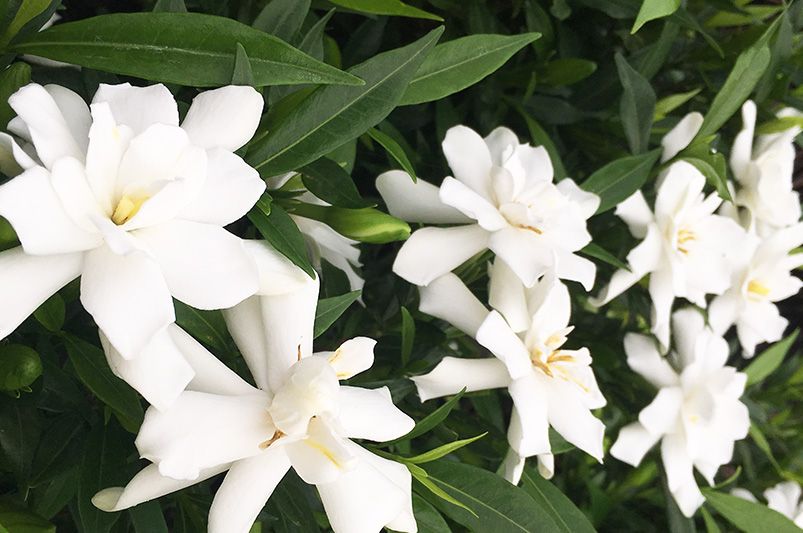
Frost Proof Gardenia
Frost Proof Gardenia stands up well to cold temperatures, so it works great in subtropical regions. The dark green leaves look nice next to the white blooms. These flowers do best in full sun and do not get hurt by cold weather in late spring. The plant can grow up to 5 feet tall and 4 feet wide. This size helps add some height to your garden or yard.
Frost Proof Gardenias are not like the usual types. They adapt to different growing conditions, even during the winter months. You only need to do a little to protect them. Good soil drainage and high humidity are important. These plants can handle rough weather if you meet these needs.
Place them along hedges or borders so people can see their strong white blooms, even in cool seasons. You can also plant them in raised beds or pots. These gardenias are tough and handle cold well, which makes them a smart choice for people who want an easy-to-care-for plant.
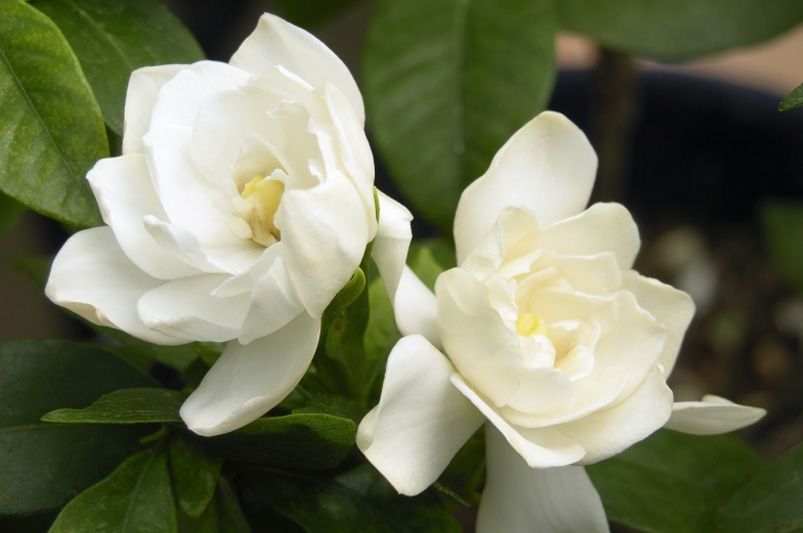
August Beauty Gardenia
August Beauty is one of the gardenia varieties that people know for its many fragrant flowers. These white flowers start to appear in late spring. The plant does well if it has moist soil and gets partial sun. With care, this shrub can give blooms all through the growing season. It grows up to 5 feet tall and about 3 feet wide. Because of this, the plant fits well in mixed borders or patio containers.
August Beauty grows best when you water it deeply and often enough to keep the soil moist, but not too wet. Try not to use too much water, so you keep the nutrients in the soil and help the plant grow in a good way.
You can put August Beauty close to walkways or any place you like to sit outside. Its good smell is nice in any garden. You might use it for a hedge, or put it in a container garden. Its small size and pretty flowers make a lot of people pick this plant for their gardens.

Buttons Gardenia
Buttons Gardenia is great for indoor spaces. The soil has peat moss, which helps the plant grow well, especially if there is morning sun coming in. These plants stay small, so they fit well inside your home. They do a good job of shining up dark corners. The leaves smell nice and make spots with only a bit of light seem better.
For Buttons Gardenia to grow inside, you need to use a potting mix that is a bit acidic. This is very important. Place them on a desk or a windowsill. The soil must keep some water, but you do not want poor drainage. Too much water that cannot get out will hurt the roots. These plants give your place both style and clean air at the same time.
If you want more flowers, you can use slow-release fertilizer. This helps keep the plant healthy. Buttons Gardenia is perfect when you want to make your room look better. They are very good for people who only use container gardens in their homes.
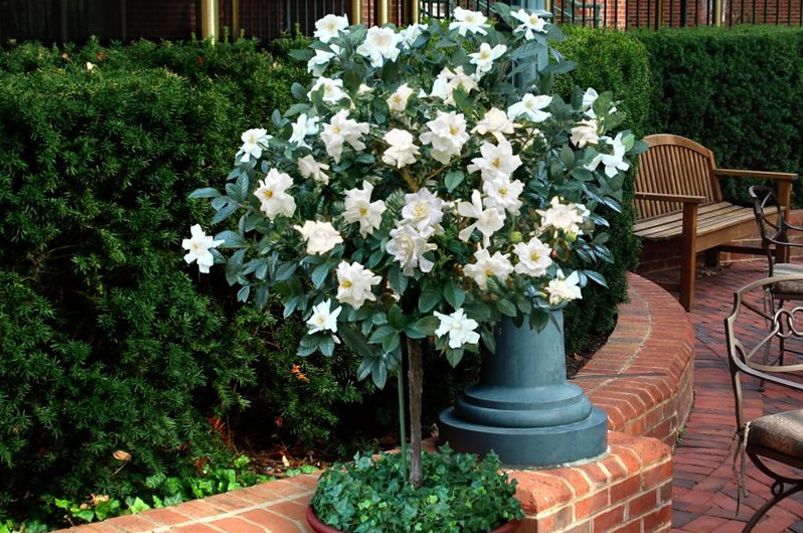
Aimee Tree Gardenia
Aimee Tree Gardenia has big white flowers and strong, good-looking leaves. This plant can grow up to 8 feet tall. When it gets full sun exposure, it makes more blooms and keeps its leaves shiny and nice for show.
Put Aimee Gardenias in a spot where there is a lot of steady light. If you put it in the shade, it may not grow as many flowers. These plants need more space up and out than other kinds, which is good if you want a taller look in the garden.
Aimee Tree Gardenias look good with bigger gardens, especially if you plant them with low hedges. Their white flowers and handsome foliage really stand out. These gardenias often get people to stop and take a look when they bloom the most.
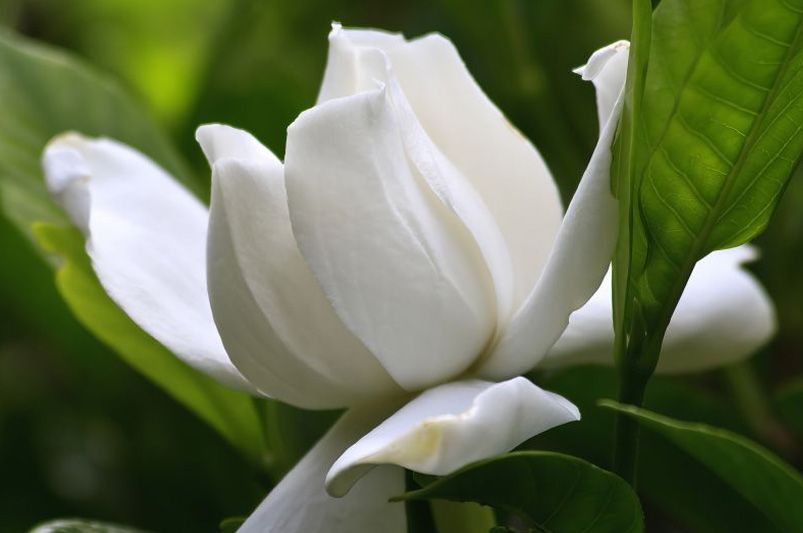
Coconut Magic Gardenia
Known for their strong tropical smell, Coconut Magic Gardenias do well in high humidity. They also have lush foliage that looks better than most. The big flowers fill outdoor spots with a nice scent and help make these areas feel like a tropical getaway.
These plants like the same kind of soil as others that grow in warm weather. People who grow them should check the moisture in the soil. It is important not to make the soil too wet, since poor drainage can harm the plant. This is key for letting the flowers grow well and keeping the air around them humid during growing season.
You can use Coconut Magic Gardenias in pots or in gardens with tropical themes. They can also stand out next to high borders or at the sides of patios. These plants give a bold touch to any place you put them.
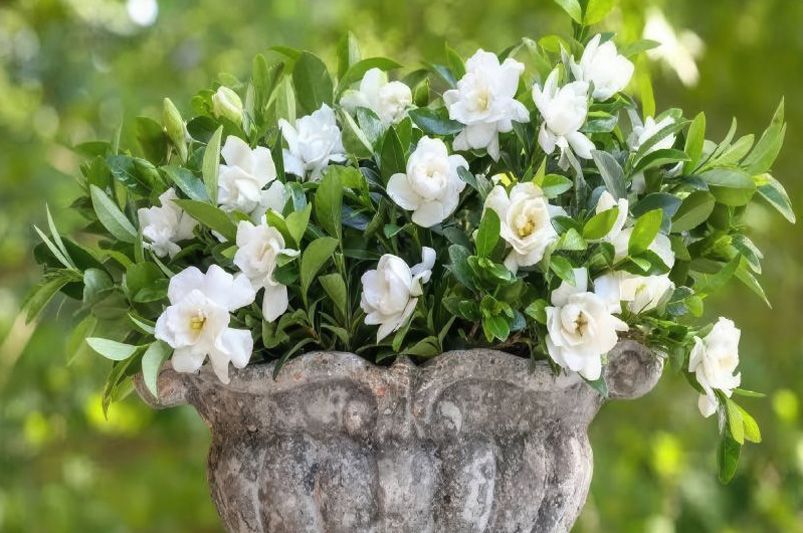
Jubilation Gardenia
Gardenia Jubilation has double flowers that last through severe winters and cold night temperatures. Its fragrant flowers make any place smell good and beautiful. This plant can fit in many types of climates with little trouble.
The thick foliage helps protect the blooms from harsh weather, even when it gets very cold. If you put pine bark around the plant, it keeps the gardenia safe from frost. It also gets a boost if you use balanced fertilizer or ones with ammonium in them.
Jubilation stays steady and looks good from entryways to quiet gardens, even as the climate changes.
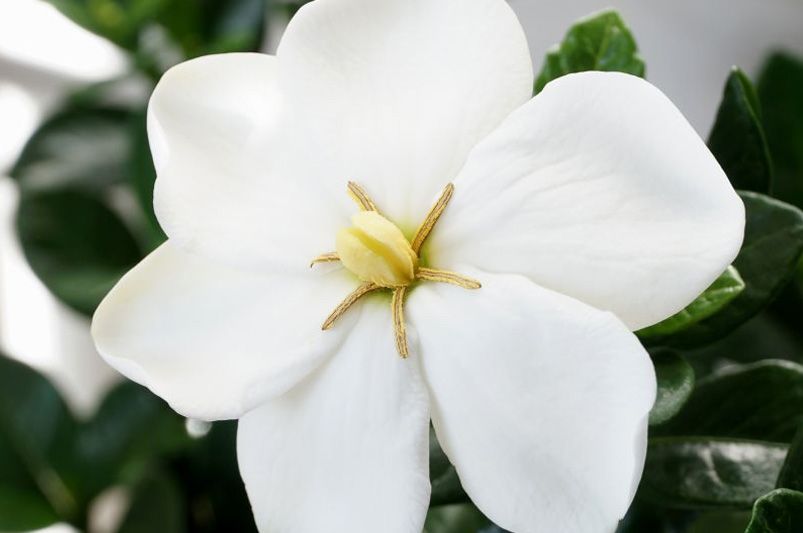
Kleim's Hardy Gardenia
Kleim's Hardy is known for how well it survives in cold temperatures. Many people like to grow this plant if they want flowers in partial shade. This gardenia can keep its white blooms even when it's cold outside, like in Zone 7. That shows how it can be used in many different ways.
The shape of this plant is small and neat, so it works well in containers or if you want to try a vertical garden look. If you keep the soil pH on the acidic side, this helps the plant stay healthy and keep blooming even when evening temperatures go up and down. Many people really like this flower, even those who are hard to impress or who only add flowers for that season's decor.

Radicans Gardenia
The radicans gardenia, or Cape jasmine, is a good pick for people who love to work in the garden. This plant does best in well-drained, acidic soil. The white flowers on it really stand out. To grow well in the growing season, it needs full sun exposure for about six hours each day. But in hotter places it can do well with some partial shade too. The plant likes high humidity and needs to stay moist, especially in early spring when there is new growth. Because of these needs, Cape jasmine is popular in subtropical regions.
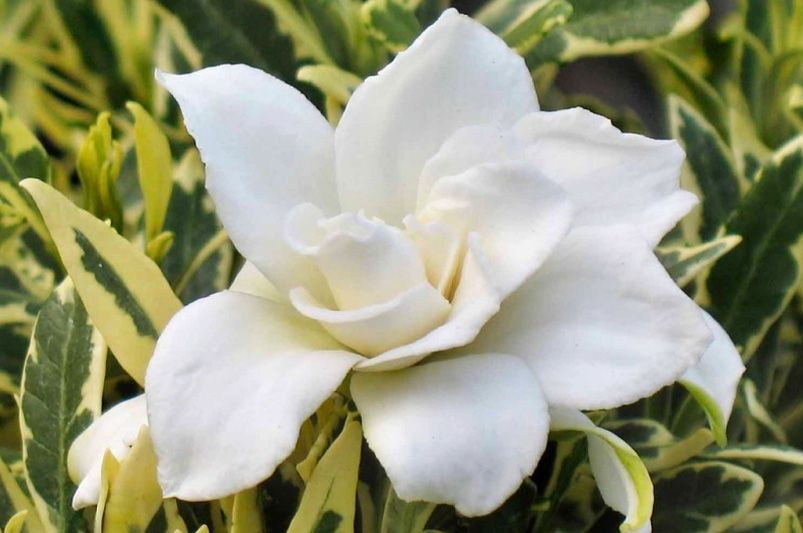
Variegated Radicans Gardenia
The variegated radicans gardenia is one of the most visually striking plants you can put in your garden. This plant has handsome foliage that will make any space look good. To grow well, it needs acidic soil. The pH of the soil should be between 5.0 and 6.0. It is best if you place the plant in partial shade, so it gets some morning sun and is protected by afternoon shade. This helps prevent leaf burn. The plant also does well in high humidity, which helps it grow better. You need to keep an eye out for spider mites and protect the plant from them. If you do, you will see its fragrant white flowers open up in late spring and early summer.
Ideal Conditions for Growing Gardenias
Fragrant white flowers and lush foliage grow best when gardenias have the right conditions. These plants do well in acidic soil with a pH between 6.0 and 6.5. This helps them get the nutrients they need. Choose a planting site that gets morning sun but has afternoon shade. This balance helps gardenias develop well. High humidity is important, especially in subtropical regions. It’s also important to protect them from cold temperatures, as cold can harm their growth. You should keep the soil moist, but stop poor drainage so the roots can stay healthy. This way, you get those beautiful and fragrant white flowers you love.
Best Soil Types for Gardenias
Gardenia plants need an acidic soil that drains well. To help the soil, you can add organic matter like peat moss or pine bark. This gives the soil better texture and more nutrients. Keep the soil pH between 5.0 and 6.0. This helps the roots grow well and keeps nutrient deficiencies low. When roots are healthy, you will get lush foliage on your gardenia plants. Make sure the soil does not have poor drainage. If water sits in the soil, root rot can happen and that is bad for the plants.
Optimal Sunlight and Shade Requirements
Gardenia plants do best when they get a mix of sunlight and shade. They need about six to eight hours of sunlight each day. Getting morning sun and some afternoon shade will help protect them from too much heat and strong light. In subtropical regions, you can use taller plants to give filtered light. This keeps young gardenia plants safe from extreme temperatures. If there is insufficient light, the plants may get bud drop and not have many flowers. But if you give them the right balance of sunlight, you will get dark green leaves and lots of the well-known white blooms. That is why gardenias are loved by so many people.
Temperature and Humidity Needs
For your gardenia plants to grow well, you need to keep them in the ideal temperature range. It is best to keep them in moderate warmth, with daytime temperatures between 65°F to 70°F. At night, the temperature should be a little cooler. High humidity is also important for gardenia plants. If the air is too dry, it can cause environmental stress and things like bud drop. So, you should try to give them a good atmosphere to live in. You can put gardenias in subtropical regions, or if you grow them indoors, you can use a humidifier. You may also mist the plants often, and you can place them close together. These simple ways help to make the right humidity level, and your gardenia plants will look and feel good.
Planting and Initial Care
Selecting the best planting site can help white flowers like gardenias grow well. Pick a spot that gets full sun in the morning. Let the area have afternoon shade. This will shield young plants from harsh weather and give them what they need. It is good to use an acidic potting mix with some organic matter like peat moss mixed in. This mix is good for the root ball and helps it get strong.
After you put your plant in the ground, make sure the soil stays moist. Water it often, but do not let the spot get poor drainage. The root ball should be wet but not sitting in water. This helps the plant grow lush and gives you lovely, fragrant white flowers.
Guide to Planting Gardenias
Choosing the right planting site is very important if you want your gardenia plants to grow well. The best spot will give the plants morning sun and some afternoon shade. This helps protect them from extreme temperatures. When you prepare the soil, add organic matter like peat moss or pine bark. This will help the soil hold more moisture and keep it a bit more acidic, which gardenia plants need. Place the root ball just a little higher than the ground around it. This helps water drain the right way. After planting, water the plant well to help its roots grow strong and give your gardenia plants a good start.
Watering Techniques for Young Gardenias
Keeping the soil moist is important for young gardenias, especially when you are planting new ones. You should water the soil often so it stays moist all the time, but do not let it get too wet. It is best to water your plants early in the morning. This gives them time to soak up water before the day gets hot. For the best results, try to use rainwater or distilled water. This will keep the pH from getting too high. Watch how the plants react, and change the way you water if you need to. This is very important when there are dry times or when there is high humidity. Doing this will help your gardenias grow well.
When and How to Mulch Gardenias
Putting mulch around gardenias is important. It helps keep the soil wet and cuts down on weeds. The best mulch is made from things like pine bark or shredded leaves. This gives the plant nutrients and keeps the soil warm or cool. Spread a layer that is two to three inches thick near the base. Be careful not to let it touch the stem, or it may start to rot. The best time to do this is in early spring when new growth starts. This way, your gardenias get enough water during the growing season.
Ongoing Maintenance Tips
Taking care of gardenias the right way is very important if you want them to grow well. You should prune by cutting off dead or weak branches. This will help the plant get new growth and let more air move around. It is also a good idea to use fertilizers with a lot of nitrogen that are made for acid-loving plants. Be sure to follow the label directions so your plant can take in all the nutrients it needs.
You should check the plant often for pests such as spider mites. These small bugs can hurt your gardenias and make the plant stressed. Try to keep the water level just right. If the plant gets too dry, it will not do well. Having the right moisture can help your plant make nice fragrant white flowers during the growing season.
Pruning Techniques for Healthy Growth
Pruning is important to keep gardenia plants healthy. The best time to cut them is in late spring, right before the growing season. At this time, remove any branches that are dead or damaged. This will help the plants get new growth. Trim the plant to make it smaller and to help air move around the thick leaves.
When you cut, make sure you do it above a leaf node. This helps the branches grow out more and makes the chance of getting more blooming white flowers higher. You can also do a little pruning after the fragrant white flowers are done blooming. Take off old buds and shape the plant, so it keeps its energy for the next time it gets full of blooms.
The Right Fertilizers for Thriving Gardenias
Choosing the right fertilizers is important to help gardenias stay healthy. A mix made for acid-loving plants will help keep the soil pH at the best level. This will help the plants grow better and get more of those bright, fragrant white flowers. In the growing season, give your gardenias slow-release organic matter. This helps the plant keep nutrients and makes its roots strong. Always read and follow the label directions, because if you use too much fertilizer it can hurt the plant. Overuse may cause environmental stress or even nutrient deficiencies. Make sure to feed your gardenias in early spring, so their white flowers get a good, strong start.
Controlling Pests and Diseases
Keeping your gardenia plants healthy means you need to check them often for pests and disease. Spider mites and aphids are two common problems. They like dry air and can hurt the plants a lot. You can use neem oil to help get rid of these pests. Neem oil is a safe, organic way to stop an infestation. Make sure your gardenia plants have high humidity and good airflow. This helps lower environmental stress, so pests do not move in. Watch for any signs of disease, like wilting or leaves changing color. Deal with these as soon as you see them to keep your lush foliage and fragrant white flowers looking good year-round.
Common Gardenia Problems
Gardenia plants can have a few problems that stop them from growing well or blooming. If you see yellow leaves, it often shows that the gardenia plants are not getting the right nutrients or they have poor drainage. Bud drop happens when the plant gets too much environmental stress, like not enough light or high humidity. If leaves turn brown, this can mean cold temperatures or dry air are the cause. The gardenia plants may not bloom at all if the planting site is not good, which shows the need to make sure they get enough sunlight and moisture.
Yellow Leaves (Chlorosis)
Yellow leaves, or what some call chlorosis, on gardenia plants can point to nutrient deficiencies. Most of the time, this happens when the soil pH is high and the plant does not have enough iron. Poor drainage or soil that is packed too tight can also keep roots from getting what they need. To help with this, try adding organic matter such as peat moss or pine bark to your soil. This can make the ground more acidic. Also, check that your gardenia plants get enough sunlight, because insufficient light can make the problem worse. When these needs are not met, the plants can go down in health.
Bud Drop
Seeing bud drop in gardenias can make you feel upset. This can be a sign that the plant has some problems. High humidity is very important for them. If the air is dry, the flower buds are more likely to drop. It is good to water the plant in a regular way, so the soil stays moist but not soaked. If the soil gets too dry, some of the buds may fall off before they open.
Gardenias also need the right amount of indirect sunlight so there is less environmental stress. Try to make changes based on these tips. This can help your plant stay healthy and grow more flower buds with nice, strong blooms.
Brown Leaves
Brown leaves on gardenias often show that there is a problem with care or the environment. If the plant does not get enough water, it can dry out. Low humidity and extreme temperatures also make leaves lose their color. Sometimes, when there are nutrient deficiencies, especially in acidic soil, this can also happen. You can help your plant by adding organic matter to the soil or by using the right type of fertilizer. It is important to check your watering and make sure there is enough humidity, especially in the winter months. By doing these things, you will help your gardenia plant stay healthy and keep its leaves looking good.
Leaf Drop
Leaf drop in gardenia plants is often a sign that they are under environmental stress or that something is wrong with their care. Things like high temperatures, low humidity, or sudden changes in light can all cause this. When these happen, the plants may shed their leaves early. To help stop this problem, you can watch the soil to keep it moist all the time. Try to protect your gardenia plants from drafts and harsh weather too. If the leaves keep falling, it is a good idea to check for pests like spider mites. These pests can make things worse for the plants and add to the stress.
Lack of Blooms
Many things can stop gardenia plants from blooming. One big reason is not enough light. Gardenias like morning sun and some indirect sunlight during the day. The white flowers grow best when they get good light. Other problems can be low humidity or changes in temperature. These can make it hard for flower buds to grow.
To help, make sure the soil stays moist, which is a key part of gardenia care. Also, check if there are any nutrient deficiencies and give the right fertilizer when needed. Watch your plant often and take care of it. This will bring back the life of your gardenia plants and help you get those fragrant white flowers you want.
Conclusion
To grow gardenia plants well, you need to know what they need and care for them the right way. Make sure you have acidic soil that drains well. Give them the right amount of sunlight. This will help you get lush foliage and white blooms during the growing season. Stay on top of looking after them, and keep watch for pests. This helps keep your plants healthy. When you take care of these fragrant flowers, you enjoy their beauty and the sweet smell they bring to your garden. The bright white blooms and green leaves will fill your yard with life during the growing season.
Need Assistance for a Complete Landscape Makeover?
Shrubhub’s landscape design packages can significantly transform the lives of homeowners by delivering customized, professional landscaping plans tailored to their unique space and personal style. With the ease of online collaboration, you are guided step-by-step through a design process that fundamentally reshapes your outdoor environment. The result is an aesthetically pleasing and functional outdoor living area that maximizes the potential of your property.


